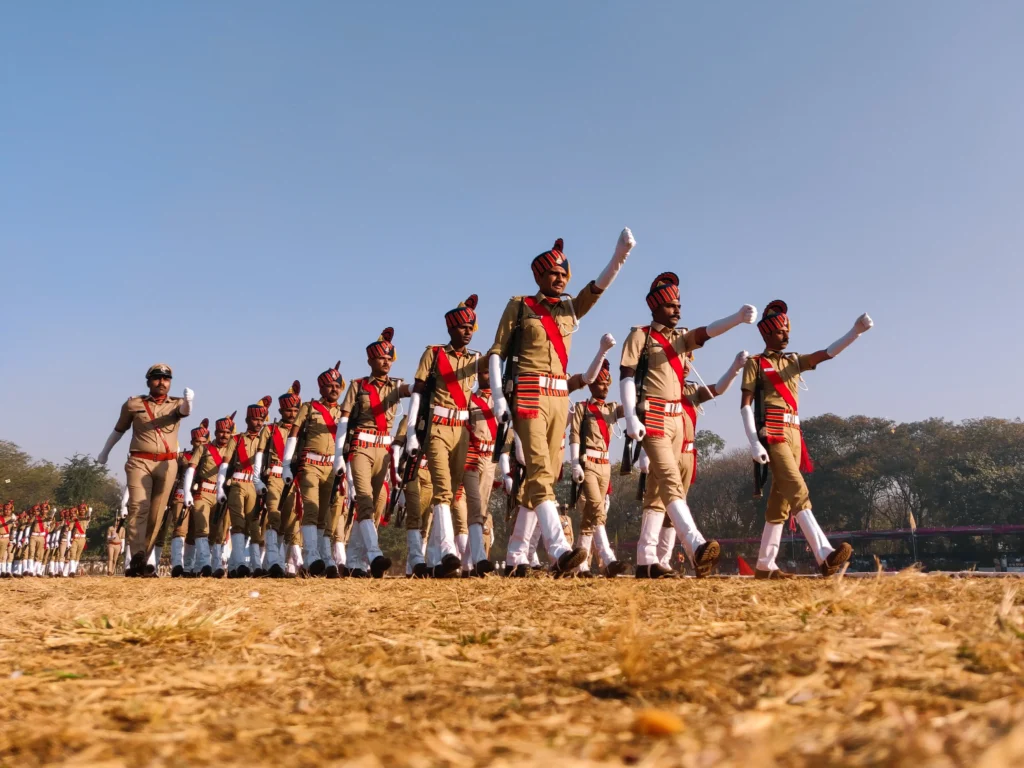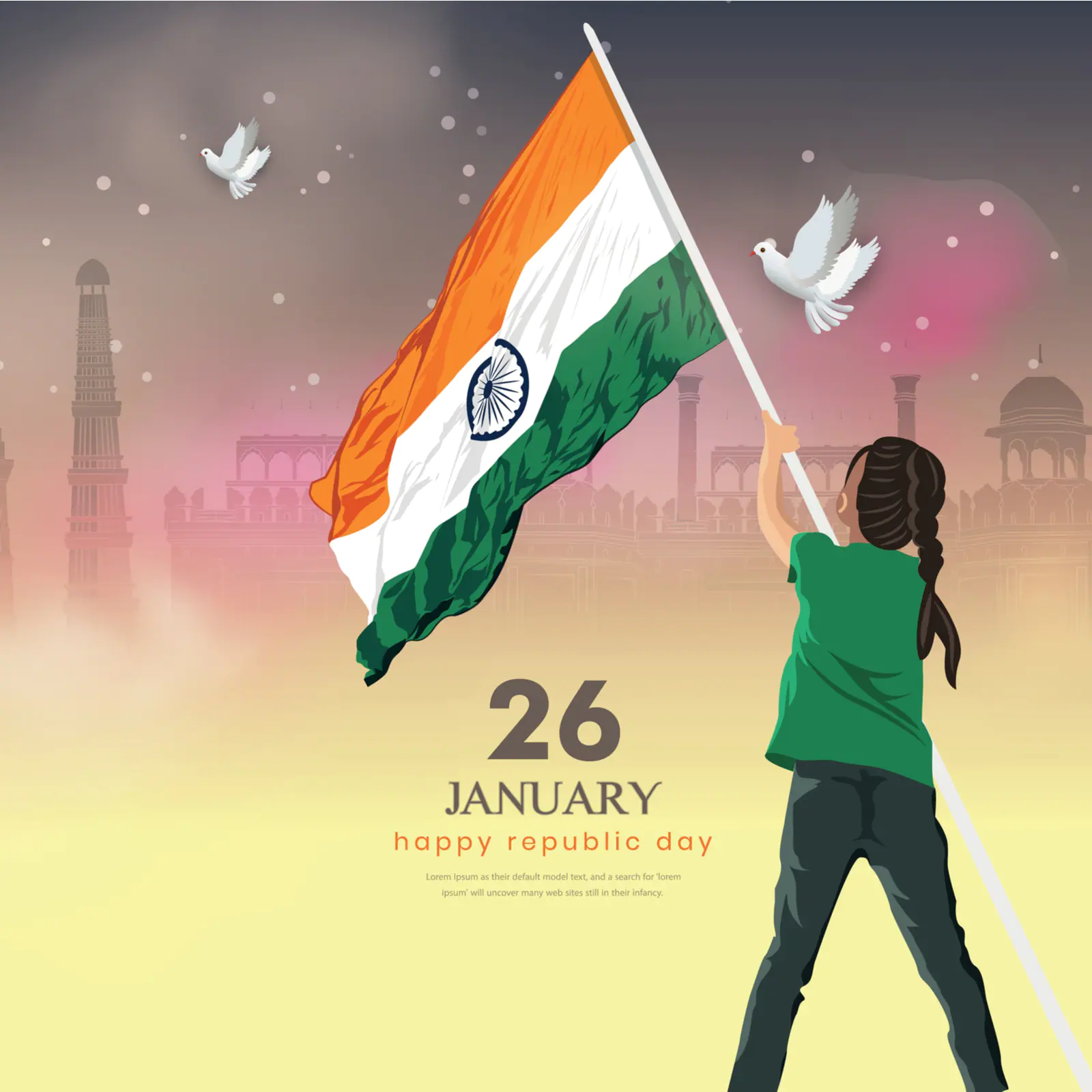Introduction
The Constitution of India came into effect on January 26, 1950, making it a significant day in Indian history. The Constituent Assembly adopted the Constitution on November 26, 1949, and the Constitution was signed on November 26th, 1949. It was a critical milestone in the creation of a free and democratic country. India celebrates Republic Day as a national holiday. With the Constitution’s passage, British colonial control came to an end and a new era of self-government began.
In order to reflect the evolving needs and ambitions of the people. The Constitution has undergone various amendments over the years. Along with the rights to life and property, it also protects people’s equality and freedom of expression. It also protects the exercise of their religion and right to travel. This blog will take you on a journey of 26th January historical importance in India. It will also show how it has influenced both the country and its citizens.

Struggle for Independence
India adopted its Constitution after a prolonged and arduous fight for independence on January 26, 1950.
Great leaders who battled against British colonial control and promoted self-governance led the fight for independence. These included Mahatma Gandhi, Jawaharlal Nehru, Sardar Patel, and many more.
Mahatma Gandhi, widely regarded as the father of the nation, instrumentalized the independence campaign. He believed in non-violent civil disobedience. He was the leader of a series of large-scale campaigns and activities, including the Salt Satyagraha and the Non-Cooperation Movement. These organized a significant portion of the Indian population and exerted pressure on the British administration.
Another significant figure in the campaign for independence was Jawaharlal Nehru, who served as India’s first Prime Minister. He was Gandhi’s close friend and was instrumental in the Indian National Congress. The political group leading the fight for independence. Mahatma Gandhi, widely regarded as the father of the nation, was a renowned Indian civil servant. He used his belief in non-violent civil disobedience to instrumental in the independence campaign.
The “Iron Man of India,” Sardar Patel, played a significant role in the independence fight. After India gained independence, he was instrumental in bringing the princely states into the Indian Union.
There were numerous additional freedom warriors who gave their life for the nation and its citizens throughout the independence battle. In addition to these two prominent figures.
They all battled to end British colonial authority and create a free and democratic country. Because their goals were the same.
India adopted the Constitution of India on January 26, 1950. It`s adoption marked the end of British colonial authority and the start of India’s new period of self-governance. It was a significant event in the history of the country. It was a testimony of the struggles and sacrifices made by the Indian people.

The Constitution of India
The Constitution of India, which took effect on January 26, 1950, is the supreme law of the nation. It establishes the basic liberties and responsibilities of its inhabitants. The Constitution also establishes the scope and composition of the executive and legislative branches of government. It has undergone various revisions throughout the years to reflect the varying requirements and ambitions of the populace.
The values and guiding principles that underpin the country reflect in the Republic of India’s Constitution. The Constitution serves as the bedrock upon which the country is erect.
The rights of people to equality, freedom of expression, religion, and travel, as well as the rights to life and property are all guaranteed under the Indian Constitution. The rights of people to life and property are all guaranteed under the Indian Constitution. It lays forth the organization of government. The Prime Minister serves as the head of government and the President serves as the head of state. With distinct legislative, executive, and judicial departments of government, the Constitution also established a system of checks and balances.
Representatives from all cultures and regions collaboratively wrote the Constitution. The goal was to develop a text that would reflect the variety and aspirations of the Indian people.
The Constituent Assembly approved the Constitution on November 26, 1949, and it went into force on January 26, 1950.
The Indian Constitution is both a legal instrument and a social contract between the people and the government. It serves as a reminder of the country’s commitment to justice, liberty, equality, and fraternity. The Indian Constitution reflects the dreams and ambitions of the populace. It is a piece of writing that has withstood the test of time. It continues to serve as the nation and its citizens’ compass.
The Indian Constitution is a testament to the vision and foresight of its drafters. It is also a testament to the sacrifices made by the country’s freedom warriors. Understanding the Constitution is crucial to fully appreciating the historical significance of January 26.
Republic Day Parade

India showcases its rich cultural and military history through a magnificent procession down Rajpath to mark the primary Republic Day celebrations. A 21-gun salute is fired in recognition of the event. The Chief Guest of the Parade, the President of India, takes the salute. The parade also showcases military weaponry and includes a fly-past by the Indian Air Force. The parade also includes a fly-past by the Indian Air Force.
Other than the major march in New Delhi, there are celebrations and smaller parades staged in state capitals and other locations all around the nation. Additionally, to honour the anniversary, schools and universities host cultural performances and patriotic festivities. We invite everyone, regardless of their origin or region, to participate in these parades and festivals. We want everyone to share in the national spirit.
The Republic Day parade is a grand spectacle and a symbol of the nation’s strength, unity, and cultural heritage. It is a reminder of the sacrifices of the freedom fighters and the nation’s commitment to democracy and freedom. The parade is an opportunity for citizens to come together and celebrate the spirit of the nation and its people.
Conclusion
Finally, January 26 is a significant day in Indian history. It symbolises the adoption of the Constitution and the birth of a free and democratic nation. The Constitution is the ultimate law of the nation, guaranteeing citizens’ rights and liberties.
The great Republic Day parade is held around the country. Other cultural activities and patriotic festivities are held to commemorate the day. It provides an opportunity for citizens to reflect on the nation’s accomplishments as well as the difficulties that lay ahead.



